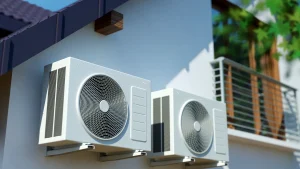In today’s technology-driven world, smart devices are transforming the way we interact with our homes. Among these innovations, smart thermostats have emerged as a game-changer in energy management, offering homeowners unprecedented control and efficiency. This blog post explores how smart thermostats revolutionize energy management in your home, leading to cost savings, enhanced comfort, and environmental benefits.
Understanding Smart Thermostats
Traditional thermostats allow manual temperature adjustments, but they lack the intelligence to optimize energy usage efficiently. Smart thermostats, on the other hand, utilize advanced technology such as artificial intelligence, machine learning, and internet connectivity to learn your heating and cooling preferences and adjust accordingly. They can be controlled remotely via smartphones, tablets, or voice-activated virtual assistants, making it convenient for homeowners to manage their indoor climate from anywhere.
Learning and Adaptation
One of the most significant advantages of smart thermostats is their ability to learn from your behavior and adapt to your lifestyle. After a short period of monitoring your temperature preferences, daily routines, and occupancy patterns, the thermostat creates a personalized heating and cooling schedule. This means your home will be at the desired temperature when you’re present and energy-efficient when you’re away, maximizing comfort and savings simultaneously.
Geofencing Technology
Smart thermostats often incorporate geofencing technology, which uses the location of your smartphone to determine your proximity to home. When you leave a pre-defined radius, the thermostat can automatically adjust the temperature to an energy-saving setting. Conversely, as you approach your home, the thermostat readies the environment for your arrival. Geofencing ensures energy is not wasted on an empty house, reducing unnecessary heating and cooling expenses.
Energy Usage Insights
With real-time data and detailed usage reports, smart thermostats provide homeowners with valuable insights into their energy consumption patterns. Users can identify trends, track energy-saving progress, and make informed decisions on further optimizing their heating and cooling practices. This data-driven approach empowers homeowners to become more conscious of their energy use and find additional ways to reduce waste.
Integration with Home Automation
Smart thermostats seamlessly integrate with other smart home devices, creating a unified and efficient home automation system. By connecting with smart lighting, window shades, and appliances, the thermostat can coordinate efforts to enhance energy efficiency. For instance, it can adjust the temperature based on natural sunlight or turn off the heating when windows are opened.
Remote Access and Control
Smart thermostats offer remote access through dedicated apps, enabling users to monitor and control their HVAC systems even when away from home. This feature is invaluable for frequent travelers or individuals with irregular schedules. By adjusting the temperature remotely, you can ensure your home remains comfortable upon your return without wasting energy while you’re away.
Adaptive Algorithms and AI Insights
Advanced algorithms and artificial intelligence in smart thermostats continually analyze your usage patterns and offer energy-saving recommendations. These insights might include suggestions for adjusting temperature settings, choosing eco-friendly modes, or even potential energy efficiency upgrades in your home. By implementing these suggestions, you can further optimize your energy management strategies.
Smart Thermostat Efficiency Programs
Many utility companies offer energy efficiency programs and rebates for homeowners who install smart thermostats. These incentives aim to encourage energy-conscious behavior and reduce the overall energy demand in the community. Taking advantage of such programs can lead to additional cost savings and a positive impact on the environment.
Environmental Impact
By reducing energy consumption and carbon emissions, smart thermostats play a role in promoting sustainability and environmental responsibility. As more households adopt these energy-efficient solutions, the collective impact on greenhouse gas emissions can be significant, contributing to a greener and more sustainable future.
Conclusion
Smart thermostats represent a remarkable advancement in energy management technology for modern homes. With their learning capabilities, remote access, and integration with home automation, these devices empower homeowners to optimize their indoor climate while reducing energy waste and utility expenses. The environmental benefits of widespread adoption are undeniable, making smart thermostats not only a smart investment for homeowners but also a responsible choice for the planet. Embrace this revolution in energy management and unlock a more efficient, comfortable, and eco-friendly living experience.







